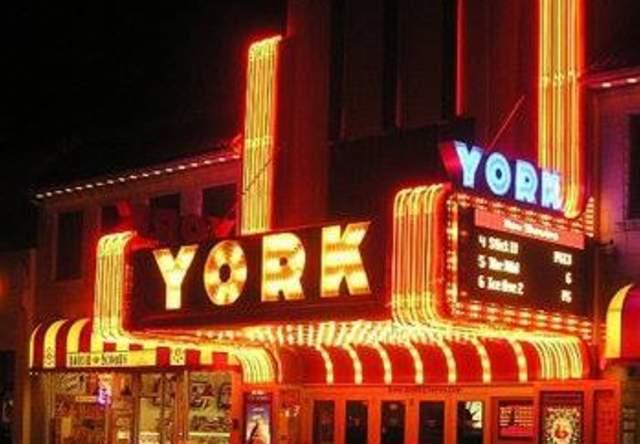Classic cinema, with its rich tapestry of storytelling and visual artistry, offers more than mere entertainment; it serves as a profound reflection of societal values, fears, and aspirations. This article embarks on a deep dive into the symbolism and themes that permeate these timeless films, unraveling the intricate layers that have captivated audiences and scholars alike. By dissecting the nuanced interplay of narrative, imagery, and cultural context, we aim to illuminate the enduring power and relevance of these cinematic masterpieces. Join us as we explore how classic cinema not only mirrors its era but also transcends it, offering insights that resonate across generations.
Exploring Symbolism in Classic Films: Hidden Meanings and Cultural Impact
Classic films have long been a canvas for directors and writers to embed layers of symbolism that reflect societal values and critique cultural norms. These films often use visual and thematic elements to convey deeper meanings, inviting audiences to look beyond the surface. For instance, Alfred Hitchcock‘s use of birds in The Birds serves as a metaphor for nature’s unpredictability and humanity’s fragile relationship with the environment. Similarly, the recurring motif of mirrors in Orson Welles‘ Citizen Kane explores themes of identity and self-perception, reflecting the protagonist’s fractured psyche.
- Color Palettes: Films like The Wizard of Oz use vibrant colors to symbolize the shift from reality to fantasy, influencing the emotional tone and guiding viewer perception.
- Objects: In Casablanca, the piano is more than an instrument; it represents the intersection of personal sacrifice and political struggle.
- Lighting: Noir films, such as Double Indemnity, employ stark lighting contrasts to highlight moral ambiguity and inner turmoil.
The cultural impact of these symbolic elements is profound, as they often mirror contemporary societal issues and influence public discourse. By dissecting these symbols, we gain insights into the historical context and enduring legacy of classic cinema, enriching our understanding of both the art form and the era it depicts.

Themes of Morality and Redemption: Lessons from Cinematic Masterpieces
Classic cinema often serves as a mirror reflecting the complexities of human morality and the arduous journey toward redemption. Films like Casablanca and The Godfather delve deep into these themes, offering audiences a nuanced portrayal of characters wrestling with their inner demons. Morality in these masterpieces is not presented as a clear-cut dichotomy but rather as a spectrum where choices reveal the intricacies of human nature. In Casablanca, Rick Blaine’s transformation from a jaded expatriate to a selfless hero underscores the potential for moral awakening amidst chaos.
- Symbolism: The use of visual metaphors, such as shadows and light, often symbolizes the moral ambiguity faced by characters.
- Character Development: Redemption arcs, like that of Michael Corleone, highlight the tension between familial loyalty and personal integrity.
- Dialogue: Iconic lines serve as ethical signposts, guiding the audience through the moral labyrinth.
These films not only entertain but also challenge viewers to reflect on their own values and the possibility of transformation. Through their intricate storytelling and profound symbolism, classic cinema continues to offer timeless lessons on morality and redemption.

The Art of Visual Storytelling: Iconic Imagery and Its Influence
The power of classic cinema lies not only in its storytelling but in its ability to convey profound themes through iconic imagery. These visual symbols transcend dialogue, creating layers of meaning that resonate across cultures and generations. Consider the use of shadows in film noir, where the interplay of light and darkness speaks to themes of moral ambiguity and the duality of human nature. In these films, shadows are not mere absences of light; they become characters in their own right, crafting a narrative that invites viewers to question reality.
Classic cinema also employs a rich tapestry of symbols that evoke universal emotions and ideas. Key examples include:
- Roses: Often symbolize love, beauty, and the ephemeral nature of life, as seen in films like “American Beauty”.
- Mirrors: Used to explore identity and self-reflection, as in “Citizen Kane”.
- Water: Represents purification, change, or danger, frequently utilized in Hitchcock’s suspenseful narratives.
These elements work together to create a visual language that enriches the viewer’s experience, allowing for a deeper connection with the story’s underlying themes.

Timeless Narratives: How Classic Cinema Shapes Modern Filmmaking
Classic cinema offers a treasure trove of symbolism and themes that continue to resonate in modern filmmaking. The powerful use of light and shadow in film noir, for instance, has been embraced by contemporary directors to create tension and mood. This genre’s exploration of the human psyche, morality, and existential dread remains relevant, offering a blueprint for storytelling that transcends time.
- Hero’s Journey: A narrative arc that guides countless films today, rooted in timeless tales of growth and transformation.
- Social Commentary: Classic films often delve into societal issues, inspiring modern filmmakers to tackle contemporary topics with the same depth and nuance.
- Visual Metaphors: From Hitchcock’s use of birds to represent chaos to the symbolic landscapes of Westerns, these visual cues are masterfully woven into the fabric of modern cinema.
By examining these enduring elements, filmmakers not only pay homage to the past but also enrich their narratives, ensuring that the legacy of classic cinema continues to influence and inspire.

